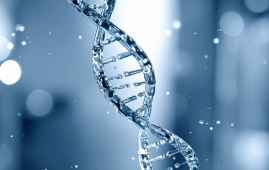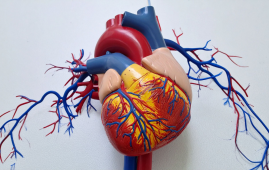

Despite a growing amount of research looking at an increasing diversity of genetic, cellular, and microbiological data, the biological foundations of autism continue to perplex researchers. Scientists have recently focused on a new and interesting field of study: the microbiome. This collection of bacteria found in the human gut has been proven to play a role in autism, although the mechanics of this link are yet unknown.
A study published today, June 26, in Nature Neuroscience, sheds new light on the association between the microbiome and autism by taking a novel computational approach to the problem. This work, which began at the Simons Foundation’s Autism Research Initiative (SFARI) and includes an innovative reanalysis of hundreds of previously published datasets, is consistent with a recent, long-term study of autistic people that focused on a microbiome-based therapy intervention. These findings further highlight the need of longitudinal studies in understanding the relationship between the microbiome and complicated disorders like autism.
“We were able to harmonize seemingly disparate data from different studies and find a common language with which to unite them. With this, we were able to identify a microbial signature that distinguishes autistic from neurotypical individuals across many studies,” says Jamie Morton, one of the study’s corresponding authors, who began this work while a postdoctoral researcher at the Simons Foundation and is now an independent consultant. “But the bigger point is that going forward, we need robust long-term studies that look at as many datasets as possible and understand how they change when there is a [therapeutic] intervention.”
This study, which had 43 authors, brought together experts in computational biology, engineering, medicine, autism, and the microbiome from North America, South America, Europe, and Asia. “The sheer number of fields and areas of expertise in this large-scale collaboration is noteworthy and necessary to get a new and consistent picture of autism,” says Rob Knight, head of the University of California San Diego’s Center for Microbiome Innovation and study co-author.
Autism is intrinsically complicated, and research attempting to identify specific gut microorganisms involved in the disorder have been hampered by this. First, autism manifests in a variety of ways—autistic people differ genetically, physiologically, and behaviorally. Second, the microbiome poses distinct challenges. Microbiome studies often only reveal the relative proportions of various bacteria, necessitating the use of complex statistics to determine which microbial population changes are related to a condition of interest.
This makes it challenging to find the signal amongst the noise. Making matters more complicated, most studies to date have been one-time snapshots of the microbial populations present in autistic individuals. “A single time point is only so powerful; it could be very different tomorrow or next week,” says study co-author Brittany Needham, assistant professor of anatomy, cell biology and physiology at the Indiana University School of Medicine.
“We wanted to address the constantly evolving question of how the microbiome is associated with autism, and thought, ‘let’s go back to existing datasets and see how much information we may be able to get out of them,'” says co-corresponding author Gaspar Taroncher-Oldenburg, director of Therapeutics Alliances at New York University, who initiated the work with Morton while he was a consultant-in-residence for SFARI.
In the new study, the researchers created an algorithm to re-analyze 25 previously published datasets combining microbiome and other “omic” information from both autistic and neurotypical cohorts, such as gene expression, immune system response, and diet. Within each dataset, the algorithm identified the best matched pairs of autistic and neurotypical individuals in terms of age and gender, two criteria that can sometimes complicate autism research.
“Rather than comparing average cohort results within studies, we treated each pair as a single data point, and thus were able to simultaneously analyze over 600 ASD-control pairs corresponding to a de facto cohort of over 1,200 children,” says Taroncher-Oldenburg. “From a technical standpoint, this required the development of novel computational methodologies altogether,” he adds. Their new computational approach enabled them to reliably identify microbes that have differing abundances between ASD and neurotypical individuals.
To the researchers’ surprise, their analysis identified autism-specific metabolic pathways associated with particular human gut microbes. Importantly, these pathways were also seen elsewhere in autistic individuals, from their brain-associated gene expression profiles to their diets. “We hadn’t seen this kind of clear overlap between gut microbial and human metabolic pathways in autism before,” says Morton.
Even more striking was the similarity between autism-associated microorganisms and those identified in a recent long-term fecal microbiota transplant study led by James Adams and Rosa Krajmalnik-Brown at Arizona State University’s Biodesign Center for Health Through Microbiomes. “Another set of eyes looked at this, from a different lens, and they validated our findings,” adds Krajmalnik-Brown, who was not involved in the study published in Nature Neuroscience.
“What’s significant about this work is not only the identification of major signatures, but also the computational analysis that identified the need for future studies to include longitudinal, carefully designed measurements and controls to enable robust interpretation,” says Kelsey Martin, executive vice president of SFARI and the Simons Foundation Neuroscience Collaborations, who was not involved in the study.
“Going forward, we need more long-term studies that involve interventions, so we can get at cause-and-effect,” says Morton. Taroncher-Oldenburg, who cites the compliance issues often faced by traditional long-term studies, suggests that study designs could more effectively take into account the realities of long-term microbiome sampling of autistic individuals. “Practical, clinical restrictions must inform the statistics, and that will inform the study design,” he says. Further, he points out that long-term studies can reveal insights about both the group and the individual, as well as how that individual responds to specific interventions over time.
Importantly, researchers say these findings go beyond autism. The approach set forth here could also be employed across other areas of biomedicine that have long proved challenging. “Before this, we had smoke indicating the microbiome was involved in autism, and now we have fire. We can apply this approach to many other areas, from depression to Parkinson’s to cancer, where we think the microbiome plays a role, but where we don’t yet know exactly what the role is,” says Knight.
more recommended stories
 Citrus and Grape Compounds Help Prevent Type 2 Diabetes
Citrus and Grape Compounds Help Prevent Type 2 DiabetesA new clinical trial highlights the.
 Personalized Pain Care Transforms Parkinson’s Treatment
Personalized Pain Care Transforms Parkinson’s TreatmentNew UniSA research underscores the urgent.
 Genetic Diversity Explains Obesity Risk Differences
Genetic Diversity Explains Obesity Risk DifferencesCross-ancestry Study Identifies Novel Obesity Genes.
 Meniscal Tear and OA Pain Improved by Home Exercise
Meniscal Tear and OA Pain Improved by Home ExerciseHome Exercise Proves Effective for Knee.
 AI ECG Model Outperforms Standard STEMI Triage
AI ECG Model Outperforms Standard STEMI TriageNovel AI ECG Model Outperforms Standard.
 New Software Transforms Real-Time Pathogen Surveillance
New Software Transforms Real-Time Pathogen SurveillanceReal-Time Pathogen Surveillance Software Transforms Environmental.
 Bright Nights May Increase Stroke, Heart Failures in Adults
Bright Nights May Increase Stroke, Heart Failures in AdultsBright Nights are tied to increased.
 Cannabis Use Linked to Regular Tobacco in US Youth
Cannabis Use Linked to Regular Tobacco in US YouthCannabis Use and Tobacco Risk: A.
 Mediterranean Diet Reduces Endometriosis Risk in Women
Mediterranean Diet Reduces Endometriosis Risk in WomenMediterranean Diet and Endometriosis: A Promising.
 Night Shifts May Trigger Irritable Bowel Syndrome (IBS)
Night Shifts May Trigger Irritable Bowel Syndrome (IBS)Night Shifts and Digestive Health: Linking.

Leave a Comment